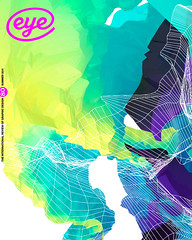Summer 2011
Logos without words
Symbol
By Angus Hyland and Steven Bateman, Laurence King, £22.50Despite the soft cover, this book by Angus Hyland and Steven Bateman is anything but flimsy. It is an absorbing and exhaustive overview of 1300 commercial symbols (visual devices or trademarks that are not dependent on letterforms, words, or names).
However, the book is by no means a definitive list, or a ‘greatest hits’. Reflecting ‘the editorial tendencies of its authors’, the selection comprises a cross-section of symbols from the past decade, peppered with well-thumbed classics from the pantheon of trademark design: Stefan Kanchev, Katsuichi Ito, Lippincott, Unimark International, Chermayeff & Geismar, Karol Sliwka and, of course, Pentagram, where Hyland is a partner.
In format and layout, Symbol recalls Michael Evamy’s excellent Logo (2007; and also published by Laurence King). To emphasise the visual form and purity of the symbols, they are shown predominantly in black and white.
The book is neatly organised into two main sections: ‘Abstract’ and ‘Representational’; then subdivided according to their visual characteristics. For example, the British Rail symbol is included under ‘Arrows’ and the Woolmark under the rather tenuous classification of ‘Plaid, Woven and Chequered motifs’. ‘Representational’ is broken down into more tangible groups, such as ‘Hands’, ‘Birds’ and the bizarre ‘Everyday Objects’. This slightly contrived taxonomy helps to order and regulate, but it does invite several arbitrary and undistinguished present-day entries, as well as point to the same palette of visual clichés.
Each symbol is accompanied by a brief caption, and the occasional anecdote or design motivation. For all that, the gem in this book is the series of short case studies that celebrate some of the most original, effective and durable visual identities ever created.
These include the MOT vehicle test’s three triangles, CND and the usual suspects of British Rail, CBS, Centre Pompidou, KLM, Pan Am, Penguin, Shell and Nike.
Particularly interesting is the rationale behind the deceptively simple Deutsche Bank logo from 1974, where ‘the diagonal stands for consistent growth in a stable environment’. It is good to learn that such semiotic swagger existed in a time before logo design was fuelled by strategy, positioning and marketing nonsense.
Curiously, some of the most ubiquitous global brands are notable by their absence. Where, for example, are the Adidas Trefoil, Vodafone’s ‘Speechmark’, Playboy’s bunny, BP’s ‘Helios’ or the Starbucks Siren? I imagine that some omissions may be due to the demands of overzealous copyright holders.
In fact, the decision by Starbucks, earlier this year, to remove the words from its trademark amplified the potency of the symbol. It illustrated how much further a word-free logo can travel – geographically, cross-language, cross-portfolio and cross-platform; and how graphic symbols simply perform better in an ever increasing globalised world.
To set this book further apart from the deluge of logo books arriving from Far Eastern publishers (that are often no more than analogue equivalents of brandsoftheworld.com), I would have liked some more text: essentially, more insight into the creative decisions, and deeper critical or qualitative analysis. Nevertheless, there is much to savour in Symbol. As a vibrant visual survey of contemporary symbol design, interspersed with several iconic greats, this book would make a welcome addition to any graphic designer’s library.
First published in Eye no. 80 vol. 20 2011
Eye is the world’s most beautiful and collectable graphic design journal, published quarterly for professional designers, students and anyone interested in critical, informed writing about graphic design and visual culture. It is available from all good design bookshops and online at the Eye shop, where you can buy subscriptions, back issues and single copies of the latest issue.

